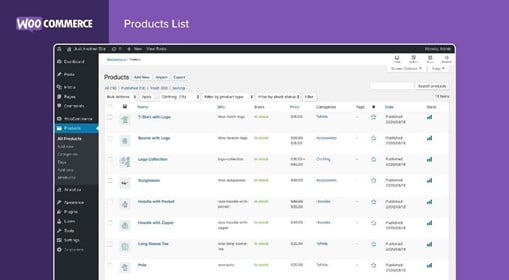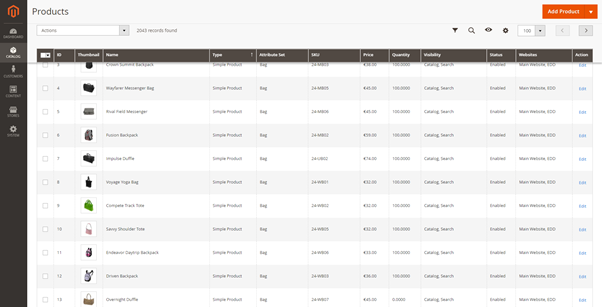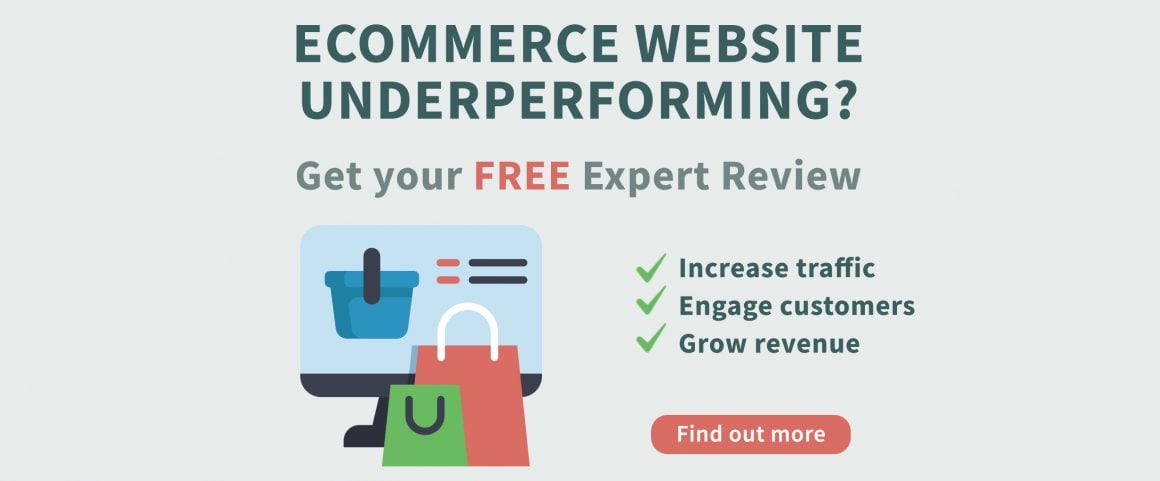WooCommerce vs Magento: which platform is best for your e-commerce store?
The success of your online store depends as much on the technology behind it as what you actually sell. We compare WooCommerce vs Magento.

Having the right products, services and branding are critical to the success of your online store. But whether you’re a boho boutique or a major start-up, your e-commerce platform is fundamental.
If you’re starting or migrating an online store, then chances are you’re looking at one of three leading solutions. More than 292,000 of the internet’s top one million sites by traffic have a web store, and WooCommerce, Shopify and Magento dominate.
Together these three platforms account for more than half of leading e-commerce stores. In fact, WooCommerce alone powers nearly a quarter of all e-commerce on the web.
In a previous article, we looked in detail at Shopify vs WooCommerce.
In this guide, we’ll compare Magento to WooCommerce, contrasting their strengths and weaknesses and the differences you need to know.
So, which is better for your online store: Magento or WooCommerce?
What we cover:
1. WooCommerce vs Magento: the basics
2. What are the differences between Magento versus WooCommerce?
3. WooCommerce vs Magento: features
4. What are the pros and cons of Magento versus WooCommerce?
5. Functionality and ease of use: Magento versus WooCommerce
6. What about WooCommerce vs Magento SEO?
7. How secure are WooCommerce and Magento?
8. What about WooCommerce vs Magento pricing?
9. How do Magento and WooCommerce compare on customer support?
10. Can I migrate from Magento to WooCommerce?
11. Which platform is right for me: Magento or WooCommerce?
12. Conclusion – which e-commerce platform is best?
Read our full guide or use the links above to jump to the section you need.
WooCommerce vs Magento: the basics
Magento and WooCommerce are both web commerce platforms, fully capable of supporting basic online sales. Each can be scaled to power huge sales operations. These needn’t be confined only to the web – both platforms can be extended to integrate bricks-and-mortar sales and combined inventory management.
Magento
- Launched: 2008
- Owned by: Adobe Inc.
- Market share: 28% (Aug 2021, BuiltWith trends)
- Underlying language: PHP
![]()
WooCommerce
- Launched: 2011
- Owned by: Automattic Inc.
- Market share: 9% (Aug 2021, BuiltWith trends)
- Underlying language: PHP

Both platforms have been around for at least a decade, so there’s a good pool of skills and knowledge to support both. Both platforms are open-source – where their underlying code is free for anyone to inspect or modify. That said, both platforms have corporate owners: Adobe and Automattic respectively, meaning that for some functionality you will need to pay. Adobe offers Magento Commerce as a paid-for version of the platform, while Automattic produces paid plugins that can be used with WooCommerce.
Beyond these fundamental similarities, there’s still plenty to distinguish WooCommerce and Magento, as we’ll soon discover.
What are the differences between Magento versus WooCommerce?
Magento and WooCommerce go about things in a fundamentally different way. WooCommerce is a WordPress plugin, fitting neatly into the thriving WordPress open-source content ecosystem, but therefore tying you to the WordPress environment. Magento on the other hand is a stand-alone solution – in this regard it’s a little more similar to Shopify.
There are actually two Magento products. Magento Open Source is a free platform, aimed at smaller stores and start-ups. Its owner, Adobe, hopes that as stores grow, they’ll pay for the more comprehensive Magento Commerce (also known as Adobe Commerce).
Magento/Adobe Commerce can run on your own server, or you can choose Magento Hosted Cloud to have Adobe host it for you. Magento Open Source is only available as a self-hosted package. It gives you more flexibility, but in return is more complex than WooCommerce and has more exacting requirements – just one of the reasons why Magento has a reputation for being harder to deploy.
WooCommerce vs Magento: features
Both Magento or WooCommerce cover a wide range of e-commerce requirements, but things can inevitably get complicated. For anything other than the most basic requirements, it’s highly likely that you’ll need to enhance WooCommerce with plugins, or Magento Open Source with extensions.
WooCommerce features
If you don’t mind building on top of WordPress, WooCommerce gives you the benefits from its home in the WordPress ecosystem. It’s incredibly easy to start adding a store to an existing WordPress website, and you can draw on the support of a huge community of users and developers.
WooCommerce core features include:
- Support for services and physical goods, one-time purchases, and subscriptions
- Payment through WooCommerce Payments without setup or monthly fees
- Supports credit cards, bank transfers, cheques, Stripe, PayPal, Apple Pay, Google Pay and more
- Native shipping integration for US customers, third-party solutions for those elsewhere
- Mobile app for order management
- Marketing integration, supporting leading platforms such as Mailchimp, Facebook, Google Ads and Google Analytics
- Thousands of free and premium themes and extensions
- Fully translated into 24 languages

Magento features*
As we mentioned above, Magento comes in a couple of different flavours. The two base packages – Magento Open Source and Magento Commerce – are self-hosted, while Magento Hosted Cloud is served and managed for you. The features differ with each version.
Magento Open Source highlights include:
- Integrated checkout, payment, and shipping
- Mobile optimised shopping – provide customers with a seamless mobile experience
- Global selling – multiple languages and regional optimisations to support global trade
- Catalogue management – integrate physical stock management
- UX features such as instant purchase and site search
- Extended functionality via the app marketplace
- WYSIWYG page builder – previously a Commerce feature, but now free
While Magento Commerce adds:
- Business intelligence dashboards
- Advanced marketing tools and B2B functionality
- Content staging and preview
- Customer loyalty tools
- Product recommendations and customer segmentation
*Source: https://magento.com/products/magento-open-source

Let’s compare Magento to WooCommerce in key areas:
| Feature | WC | Mag | Why? |
|---|---|---|---|
| Ease of setup and use | 5 | 2 | Magento can be challenging to set up |
| Features | 4 | 5 | Both platforms support almost any type of business |
| Customisability and extensibility | 5 | 5 | Both are highly customisable |
| Payment handling | 5 | 5 | Both are highly flexible, and extendable through plugins or extensions |
| Costs | 4 | 2 | Magento Commerce starts at $22,000 (£16,000) per year, Magento Hosted Cloud starts at $40,000 (£29,000). Maintenance costs for Magento are also likely to be higher |
| Maintenance and security | 4 | 4 | With WooCommerce and self-hosted versions of Magento, it’s up to you to keep the installation up to date. |
| Multi-region support | 4 | 5 | Magento supports a huge range of locations and currencies out of the box. |
| SEO features | 5 | 4 | Both platforms are great, but blogs are easier with WooCommerce and WordPress. |
| Support | 3 | 4 | Magento Commerce customers get email and live support. Open Source and WooCommerce customers get knowledge bases and the community. |
| Scaleability | 3 | 5 | Whilst both platforms support sites with high volumes of traffic and sales, Magento has better scalability built-in, with out-the-box features to support heavy traffic. |
| Total | 42 | 41 |
What are the pros and cons of Magento versus WooCommerce?
WooCommerce’s biggest advantage is that it easily plugs into WordPress, the CMS behind about 42% of the world’s websites. WooCommerce is essentially a free add-on if you already have a WordPress website, and there’s usually a choice of free and paid extensions to add just about any function you can imagine. You just need to ensure that your WordPress theme is WooCommerce compatible.
Magento Open Source is a stand-alone CMS, and in some ways, out of the box it has limitations. While it does cover the basics, you’re likely to need to expand it with extensions. As your web store grows you may need to upgrade to Magento Commerce. This is incredibly comprehensive and powerful, but there is a cost to it.
We’ll now dig deeper into the detail on the pros, and cons, starting with functionality and ease of use.
Functionality and ease of use: Magento versus WooCommerce
To create a WooCommerce shop you’ll need your own domain, and either a hosted WordPress website or a WordPress installation on a webspace you own or rent. Then just add the WooCommerce plugin, which will guide you through the basics of setting up a store.
Magento Open Source and Magento Commerce are also self-hosted, but installing and configuring them is more technical than with WooCommerce. Magento Hosted Cloud solves these problems for you, but it’s more expensive still.
You can expand both platforms beyond their core features with plugins (WooCommerce) or extensions (Magento). Each has a wide range, letting you add on almost any capabilities you could imagine. Crucially, because both are open source, you can always tinker with the code itself to make your store ‘just so’. However, one issue with Magento’s slightly smaller community is that help may be more expensive.
What about WooCommerce vs Magento SEO?
Both platforms are designed with SEO performance in mind, and both help create optimised content. Magento has its own SEO toolkit, which can be expanded further through third-party extensions. However, if your digital marketing strategy includes blog posts – and it probably should – you’ll need to install an extension to support them.
WooCommerce benefits from WordPress’ blogging functionality, along with its search optimisations and brilliant SEO and analytic tools like Yoast. It’s enough to tip the balance in the WooCommerce vs Magento SEO battle.
How secure are WooCommerce and Magento?
It takes a bit of work to get your WooCommerce store fully secured. You’ll need to set up SSL, and you’ll be responsible for ensuring that the store complies with the Payment Card Industry Data Security Standard (PCI-DSS). You’ll also need to apply patches and updates – it’s much the same story in the self-hosted versions of Magento.
Use Magento Hosted Cloud and all this is taken care of for you. The cloud platform is also certified PCI-DSS compliant, which should help simplify your own certification.
What about WooCommerce vs Magento pricing?
As self-hosted packages, you’ll need to pay hosting and domain registration fees for your WooCommerce or Magento Open Source store. These aren’t likely to total more than a couple of hundred pounds per year unless you have a particularly large or busy website. If you already have a WordPress site, you can add a basic WooCommerce store for free.
With both platforms, you’ll pay one-off or recurring fees for any non-free extensions or plugins you need. You may also pay transaction fees to the service provider you use to handle payments. It’s hard to make a definitive comparison on how these compare – all stores are different. Remember, though, that the card fees for a busy store could easily eclipse hosting or software costs.
Magento Commerce solutions are more expensive than WordPress, starting at a reported $22,000 (£16,000) per year. Even self-hosted Magento Open Source is likely to be more expensive to run, given the more complex hosting requirements.
Image Source: Photo by rupixen.com on Unsplash

How do Magento and WooCommerce compare on customer support?
There’s not much to separate WooCommerce from Magento Open Source when it comes to support. For both, you’ll primarily be dependent on help from the community, so there may be a slight advantage to WooCommerce given its larger user base. You’re likely to get good support for any extensions or plugins you pay for, whereas you could be left scratching your head trying to get free ones to work.
Magento Commerce offers the considerable benefit of live support, which could prove vital when every minute of downtime costs sales.
Can I migrate from Magento to WooCommerce or vice versa?
You can migrate from one platform to the other, but doing so manually can be time-consuming and technical. Third-party services can help import existing Magento records into a new or existing WooCommerce installation or vice versa.
For example, Cart2Cart would charge a few hundred dollars to automatically transfer 1,000 products, 20,000 customers and 30,000 orders. Even so, you’ll get fewer issues and a better result if you ask an experienced e-commerce developer to help you move from one platform to the other. It might be a small upfront investment, but it is likely to pay off quite quickly.
Which platform is right for me: Magento or WooCommerce?
Every business has different needs, but it is easy to make a general recommendation. If you’re a large or growing business, about to launch or update a major web store, Magento Hosted Cloud may well be your platform of choice. It offers high availability and excellent support for global brands who can afford it.
For everyone else, the choice is more difficult. A key question is whether the extra cost that you are likely to incur with Magento will pay off in terms of added flexibility and scalability. You can use our observations in this blog to guide you but will have to make the assessment of your particular situation yourself.
Conclusion: which e-commerce platform is best?
We’re big fans of open-source, community-driven software, so both WooCommerce and Magento tick plenty of our boxes. However, Magento Open Source is quite complex to install and maintain. You could say the same about Magento Commerce, but at least you do get live support. Magento Hosted Cloud clearly appeals to the limited audience who can afford it.
If you ask us, the answer has to be: “It depends”. WooCommerce is easier to use, has a bigger community, and may be better suited to the majority of sites, but it can be outgrown. That is when Magento becomes the preferred solution.
Whichever you feel works best for you, we are happy to get you started or support your existing business on either platform. We make sure you get the bespoke e-commerce solution that is best suited for your business.
We design, build and support web stores for a wide range of customers and requirements. If you need experienced, custom e-commerce development to help your online shop succeed, talk to us to see how we could help you.


